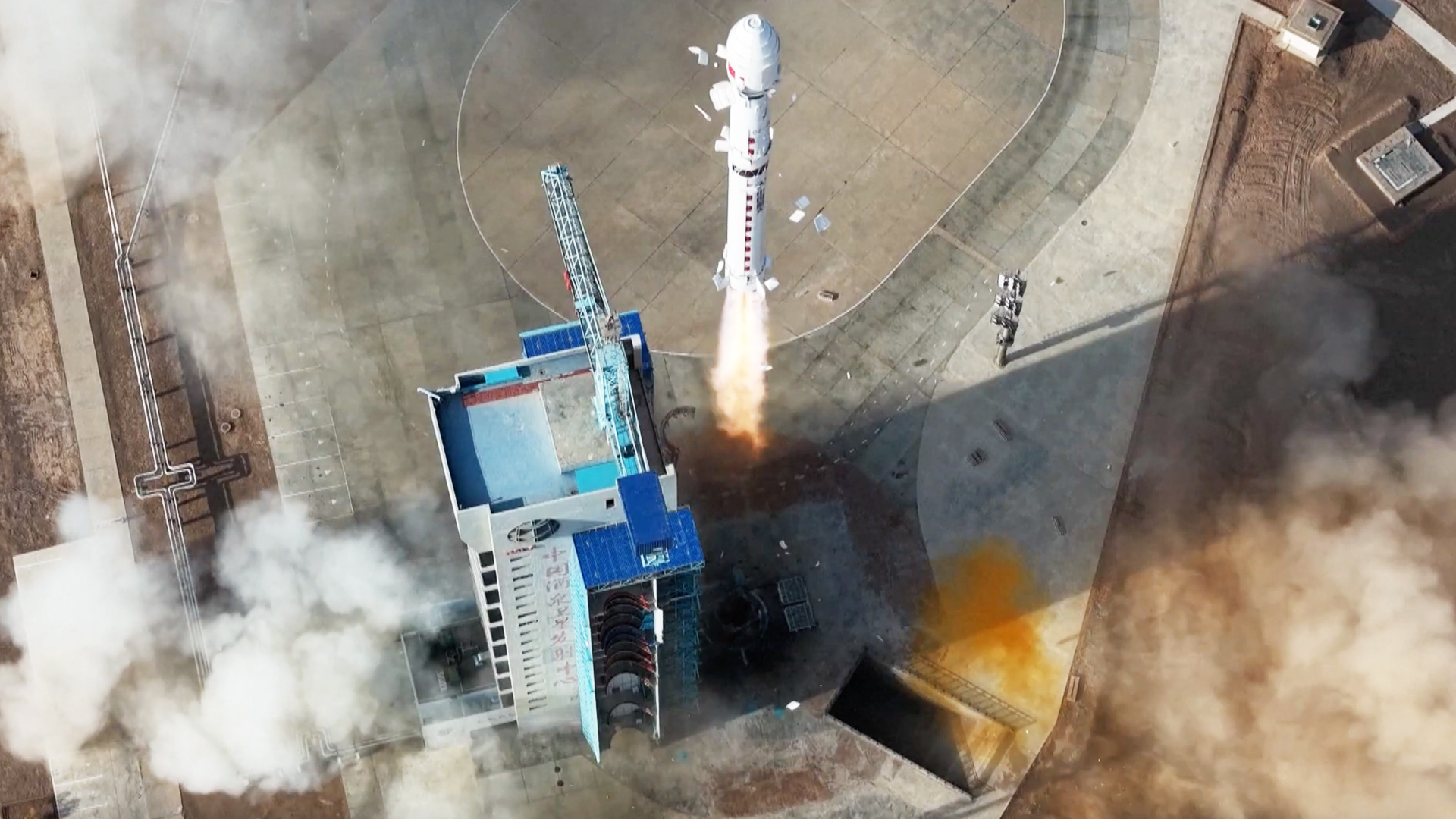GAO Warns Deep Space Network Ill-Equipped To Meet Future Demand
While NASA's Deep SpaceNetwork, an aging array of giant antennas used to communicate with spacecraftbeyond low Earth orbit, is handling its current workload, upgrades are sorelyneeded before many more new missions are launched, according a U.S. GovernmentAccountability Office (GAO) report due to be released May 22.
The 29-page reports saysthe Deep Space Network has a "deteriorating infrastructure and a limitedcapacity to serve additional missions. Systems infrastructure, which has beenmarked by extensive deferred maintenance, is aging and likely to become increasinglyfragile and subject to breakdown at a time when demand is anticipated toincrease. The potential exists for the loss of scientific data that would bedifficult, if not impossible to replace."
A copy of the report,"NASA's Deep Space Network: Current Management Structure is not Conduciveto Effectively Matching Resources with Future Requirements," was providedto Space News by an aide to U.S. Rep. Mark Udall (D-Colo.), who asked the GAOlast year to undertake the study. In a written statement, Udall, the rankingDemocrat on the House Science space and aeronautics subcommittee, called thereport "a wake up call that a vital national asset is at risk - one thatwill be critical to the success both of NASA's future deep space sciencemissions as well as the President's Vision for Space Exploration."
The Deep Space Network wasestablished in 1959 and today consists of 70-meter and smaller communicationsantennas located at three major sites around the world -- Goldstone, Calif.,Canberra, Australia, and Madrid, Spain. The network, which is managed by thePasadena, Calif.-based Jet Propulsion Laboratory, supports on average of 35 to40 missions per year. That number is expected to double by 2020, according tothe GAO report, as new missions are launched and existing missions operatelonger than planned. As a result, the report says, "new customers findthey must compete for this limited capacity, not just with each other, but alsowith legacy missions extended past their lifetimes, such as NASA's Voyager,that nonetheless return valuable science." Voyager was launched in 1977but remains in service and continues to require Deep Space Network services.
Illustrating the report arephotographs GAO officials took of a corroded dish antenna, deterioratingroadways and a leaky building at the Goldstone facility, the only Deep SpaceNetwork location the GAO officials visited in the course of their 11-monthinvestigation, which concluded in April. According to the report, NASA has"consistently deferred about $30 million in [Deep Space Network]maintenance projects each year" since 2002. The report says roadway, waterand electrical projects often are repeatedly put off as the need for newrepairs to mission critical systems crop up unexpectedly.
Many parts of the Deep SpaceNetwork's infrastructure are "showing their age" and provingincreasingly prone to equipment breakdowns and other disruptions that havecaused the loss of science data during routine mission operations and criticalevents. Goldstone, which has some of the oldest equipment in the systems, isdown an average of 16 hours a week for routine maintenance associated withaging, according to the report.
The GAO report detailsseveral recent instances where maintenance issues were implicated incommunications drop outs that resulted in loss of mission coverage orscientific data. For example, during a critical event for the Deep Impactmission on July 4, 2005, corrosion on the 70-meter dish in Madrid caused anunexpected disruption in service that forced program managers to shift to backup antennas, forcing other users off the system for a period. At Goldstone inOctober 2005 multiple antennas went down for several hours due to a powerdisruption traced back to a corroded power line, resulting in an unquantified lossof scientific data. A failed network server in November 2005 caused theStardust, Mars Reconnaissance Orbiter, Mars Odyssey and Mars Global Surveyormissions to lose a total of 241 minutes of coverage during the disruption.
Breaking space news, the latest updates on rocket launches, skywatching events and more!
The report also found that"[The Deep Space Network's] future utility is also in question becauseNASA currently has no mechanism in place to match funding for spacecommunications assets with program requirements, such as infrastructure andtechnology development needs, from an agency wide perspective." The reportsays NASA needs to do a better job coordinating the investments that itsvarious programs make in communications capabilities to avoid expenditures that"undercut broader agency goals." It cites as an example the SolarDynamic Observatory mission, a Goddard Space Flight Center-led program thatinvested in its own communications antennas in recognition that the Deep SpaceNetwork could not provide the services it needs. "Such duplicationundermines the original intent of [The Deep Space Network] to be an efficient,single network for NASA's deep space communications on Earth," the reportsays.
NASA largely concurred withthe GAO's findings and recommendations and said it already had a plan in placefor identifying all near-term and long-term Deep Space Network requirements.NASA Deputy Administrator Shana Dale, in a written response included in the GAOreport, said NASA shares the GAO's concerns about the future capacity andcapabilities of the Deep Space Network but was concerned that the report maycreate the "wrong impression" that the Deep Space Network is notcurrently meeting mission demands. "In fact, NASA has never lost a missiondue to issues associated with the Deep Space Network," Dale wrote. "Moreimportantly, no mission has been unable to meet its mission requirements due toa lack of capability in the [Deep Space Network]."
Brian Berger is the Editor-in-Chief of SpaceNews, a bi-weekly space industry news magazine, and SpaceNews.com. He joined SpaceNews covering NASA in 1998 and was named Senior Staff Writer in 2004 before becoming Deputy Editor in 2008. Brian's reporting on NASA's 2003 Columbia space shuttle accident and received the Communications Award from the National Space Club Huntsville Chapter in 2019. Brian received a bachelor's degree in magazine production and editing from Ohio University's E.W. Scripps School of Journalism.
